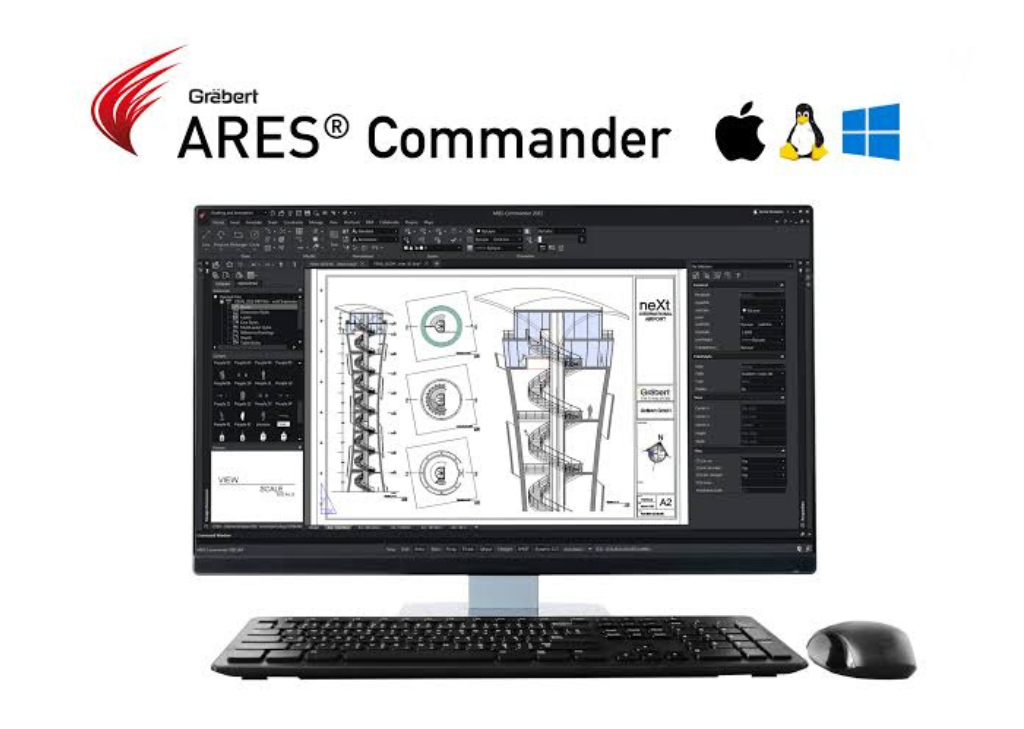Modern DWG Editing Across All Your Devices
The ARES Trinity isn’t a package of three separate products; it’s a cohesive, completely intertwined result for 2D/ 3D CAD. The addition of Cloud and Mobile technologies to Desktop CAD unlocks new workflows and improves collaboration among design platoon members, no matter where they ’re located or what device they ’re using. With interpretation 2023, guests gain lesser inflexibility thanks to new license immolations, expanded input and affair options, and stoner interface factors that let them work more comfortably.
Contextual Ribbon Tabs
They are now enhanced with contextual ribbons that are displayed when you select specific entities in the graphics area, or when you use certain commands for creating new entities.
Link Table Data with Excel
You can create tables in ARES Commander — however, it’s more convenient and flexible to use spreadsheet editors for filling in and managing the data. And sometimes you may receive a completed spreadsheet that you need to include in a drawing, but retyping or copying and pasting it is a tedious task. In both these scenarios, this new feature can save time and effort.
Now you can take all the data you have already entered in Microsoft Excel spreadsheets and reuse it in a table created in ARES Commander. You can link to an entire spreadsheet, a predefined cell range, or a cell range in Excel.
Cycling Selection
Cycling selection is a time- saving result when working with crowded delineations that include piled and lapped realities. When you hang the mouse cursor over piled realities, a small icon makes you apprehensive that there’s further than one reality. Clicking to specify realities displays a dialog box, in which you can elect the reality you want to modify.
3D View Navigator
When using the new View Navigator tool in a 3D terrain, you can switch between standard views and isometric views of the model with a single click. The View Navigator’s intuitive interface acts as a 3D exposure index, enabling you to see the current view direction.
The View Navigator is a veritably helpful point while working in a 3D terrain, as you can fluently switch between resemblant and perspective views, but you can use it in 2D as well.
Share Sheet Sets with Pack and Go
The Pack and Go point has been better to be used with sheet sets. It makes it easy for you to package into a zip train all sheets set references similar to all the delineations of your design, but also the images or underlays fitted in them. Also, the directory structure is maintained with relative paths, icing that no link will be broken when your contact unzips the design.
Sheet List Table
Located in the Sheet Set Manager right-click menu, this functionality provides a way to create a table inside the drawing listing all the sheets or subsets. Consequently, users can avoid filling in this table manually, or retyping the sheet name or other information already provided in the sheet set.
Publish Sheet Sets to DWF or DWFx
To improve the ways that the Sheet Set Manager can export drawings, we introduced support for DWF and DWFx — file formats which are much more compressed than DWG files, and therefore easy to transmit over the Internet. These are just two more options for the Publish command, in addition to the popular PDF format and the possibility to print on paper.
Split Multiple Entities
It will allow you to select multiple entities and break them at their intersection points with cutting lines. No gaps are created, and the split segments remain on the drawing.
ALIGNX
It aligns with several types of entities, following the position of the first entity that you selected.
Annotation Monitor
The new Annotation Monitor system change enables you to easily identify which annotations are no longer associated with their related geometry, and to take the necessary action in each case: reassociate the annotation or delete it.
Smart Calculator Palette
It is now displayed in a side palette, allowing you to perform calculations and edit the drawing at the same time.

